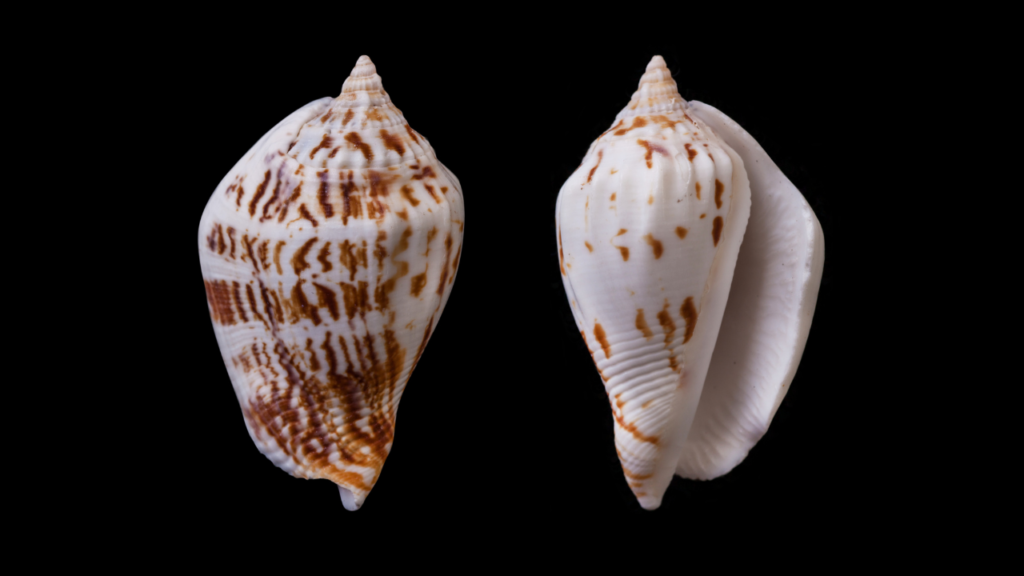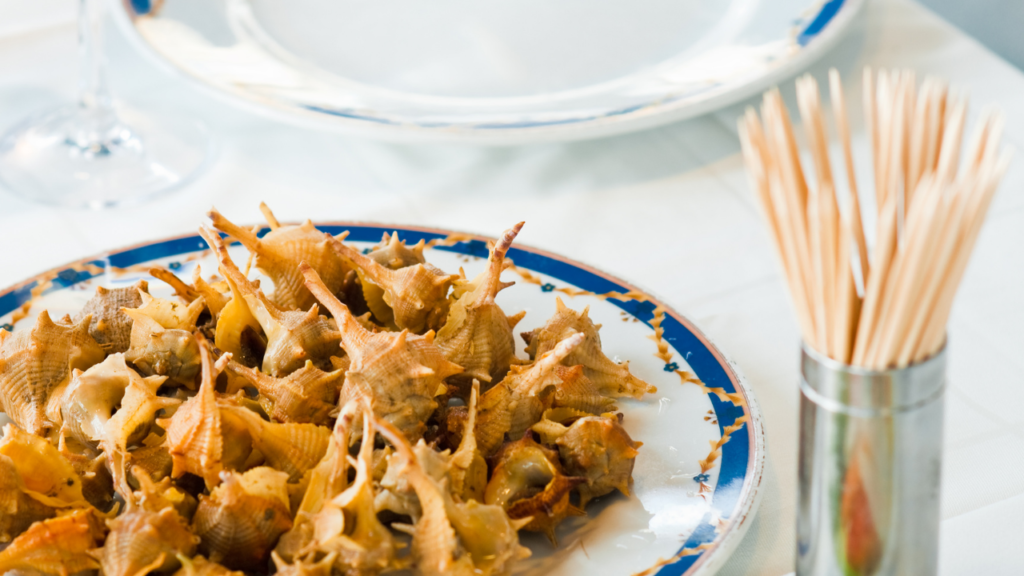The Caribbean Sea hosts a boatload of different sea snails and conches. For instance, the Strombus gigas or Queen conch is one of the best known in the Caribbean, mostly for the gorgeous shell and famous chowder. While this particular species is considered endangered, it has become more abundant over time.
It is now considered illegal in many parts of the islands to eat, such as the Florida keys. Sporting an orange outer shell and pink inner shell, the Queen conch can measure up to as high as 12 inches. Juveniles typically possess long spines, lacking the huge lip that the full-grown conches have.
Strombus gallus, or Rooster-tail conch, is a rare species that live in deeper water areas, more frequently found in the lower Caribbean. They are extremely colorful and can be gray, yellow, brown, red, or orange, extending to 7 inches in length. It is specifically named with a tail because it can possess up to two of these appendages, usually in orange or white color. Although its lip is large, it is not as big as the Queen conch.
Strombus costatus, or Milk conch, is another sea snail that belongs to the family shared by the Queen and Rooster-tail. This snail is entirely white and found only in shallow waters. The population has declined in recent years due to how often it is sought after commercially. Like the majority of other gastropods, it includes a protective trapdoor attached to its feet to protect itself from potential predators.

Strombus raninus or hawk-wing conch is a common species found in the middle and upper Caribbean sea. With many colorful patterns and a medium-sized lip, its maximum shell size is 5 inches long. Juveniles are often confused with cone snails, but the main difference is the spikes found at the top of the shell.
Strombus goliath, or the Goliath conch, though native to eastern Brazil, has been transported over the years to the lower region of the Caribbean. An extremely rare species, Goliath conch shells are edible. While the juveniles lack it, the fully matured shells sport a huge lip. The body of the snail is a cream-like color, the shell is typically brown. This is one of the largest shells from the Strombus, measuring up to 14.5 inches long. Unfortunately, it is considered endangered because of overexploitation of the gorgeous shell.
Strombus pugilis, or the West-Indian fighting conch, is a common snail species found throughout the entirety of the Caribbean Sea. Similar to the Florida fighting conch, the color is always light orange and sports extremely long spines. Furthermore, it also lives in medium to deep water and is a delight to discover on the beach. As many of the previously mentioned sea snails are edible, they make for a wondrous exotic cuisine for seafood fans.

Red Conch Chowder
Ingredients
- 1 large diced onion
- 1 garlic cloves sliced
- 1 diced green pepper
- 1 Anaheim pepper diced
- 1 smoked ham bone
- 1 can diced tomatoes
- 4 tbsp tomato paste
- 2 half-moon carrots
- 4 medium potatoes cubed
- 1 cup clam stock
- 1 lb conch diced
- ½ tsp dried thyme
- 3-4 bay leaves
Instructions
- Saute Anaheim pepper, green pepper, garlic, and onion over medium heat until softened. Add ham bone, paste, potatoes, conch, bay leaves, tomatoes, carrots, conch, bay leaves, thyme, and water to cover.
- Simmer the mixture and cover it for at least 3 hours or until the conch tenders.


